- Photo Safaris
- Alaska Bears & Puffins World's best Alaskan Coastal Brown Bear photo experience. Small group size, idyllic location, deluxe lodging, and Puffins!
- Participant Guestbook & Testimonials Candid Feedback from our participants over the years from our photo safaris, tours and workshops. We don't think there is any better way to evaluate a possible trip or workshop than to find out what others thought.
- Custom Photo Tours, Safaris and Personal Instruction Over the years we've found that many of our clients & friends want to participate in one of our trips but the dates we've scheduled just don't work for them or they'd like a customized trip for their family or friends.
- Myanmar (Burma) Photo Tour Myanmar (Burma) Photo Tour December 2017 -- with Angkor Wat option
- Reviews Go hands-on
- Camera Reviews Hands-on with our favorite cameras
- Lens reviews Lenses tested
- Photo Accessories Reviews Reviews of useful Photo and Camera Accessories of interest to our readers
- Useful Tools & Gadgets Handy tools and gadgets we've found useful or essential in our work and want to share with you.
- What's In My Camera Bag The gear David Cardinal shoots with in the field and recommends, including bags and tools, and why
- Articles About photography
- Getting Started Some photography basics
- Travel photography lesson 1: Learning your camera Top skills you should learn before heading off on a trip
- Choosing a Colorspace Picking the right colorspace is essential for a proper workflow. We walk you through your options.
- Understanding Dynamic Range Understanding Dynamic Range
- Landscape Photography Tips from Yosemite Landscape Photography, It's All About Contrast
- Introduction to Shooting Raw Introduction to Raw Files and Raw Conversion by Dave Ryan
- Using Curves by Mike Russell Using Curves
- Copyright Registration Made Easy Copyright Registration Made Easy
- Guide to Image Resizing A Photographers' Guide to Image Resizing
- CCD Cleaning by Moose Peterson CCD Cleaning by Moose Peterson
- Profiling Your Printer Profiling Your Printer
- White Balance by Moose Peterson White Balance -- Are You RGB Savvy by Moose Peterson
- Photo Tips and Techniques Quick tips and pro tricks and techniques to rapidly improve your photography
- News Photo industry and related news and reviews from around the Internet, including from dpreview and CNET
- Getting Started Some photography basics
- Resources On the web
- My Camera Bag--What I Shoot With and Why The photo gear, travel equipment, clothing, bags and accessories that I shoot with and use and why.
- Datacolor Experts Blog Color gurus, including our own David Cardinal
- Amazon Affiliate Purchases made through this link help support our site and cost you absolutely nothing. Give it a try!
- Forums User to user
- Think Tank Photo Bags Intelligently designed photo bags that I love & rely on!
- Rent Lenses & Cameras Borrowlenses does a great job of providing timely services at a great price.
- Travel Insurance With the high cost of trips and possibility of medical issues abroad trip insurance is a must for peace of mind for overseas trips in particular.
- Moose Peterson's Site There isn't much that Moose doesn't know about nature and wildlife photography. You can't learn from anyone better.
- Journeys Unforgettable Africa Journeys Unforgettable -- Awesome African safari organizers. Let them know we sent you!
- Agoda International discounted hotel booking through Agoda
- Cardinal Photo Products on Zazzle A fun selection of great gift products made from a few of our favorite images.
- David Tobie's Gallery Innovative & creative art from the guy who knows more about color than nearly anyone else
- Galleries Our favorite images
Sigma 150-600mm Contemporary lens field test: Excellent value in a lightweight telephoto zoom
Sigma 150-600mm Contemporary lens field test: Excellent value in a lightweight telephoto zoom
Submitted by David Cardinal on Tue, 08/01/2017 - 08:59
 Nikon and Canon’s long glass may be getting slightly lighter over the years, but those flagship lenses are also getting incredibly expensive. Fortunately there is a crop of third party value-priced lenses that have arrived to help out consumers. We’ve reviewed several of them in the past, like the Tamron 150-600mm G2 lens, Sigma 150-600mm Sport lens, and Nikon 200-500mm f/5.6 lens, but until now hadn’t gotten the chance to take the lighter-weight of Sigmas two superzooms, the Sigma 150-600mm Contemporary lens into the field. Our annual Alaska bear & puffin photo safari was the perfect opportunity. Two weeks of mid-range use for the bears coupled with longer-range use with the Puffins gave me a chance to put the lens through its paces.
Nikon and Canon’s long glass may be getting slightly lighter over the years, but those flagship lenses are also getting incredibly expensive. Fortunately there is a crop of third party value-priced lenses that have arrived to help out consumers. We’ve reviewed several of them in the past, like the Tamron 150-600mm G2 lens, Sigma 150-600mm Sport lens, and Nikon 200-500mm f/5.6 lens, but until now hadn’t gotten the chance to take the lighter-weight of Sigmas two superzooms, the Sigma 150-600mm Contemporary lens into the field. Our annual Alaska bear & puffin photo safari was the perfect opportunity. Two weeks of mid-range use for the bears coupled with longer-range use with the Puffins gave me a chance to put the lens through its paces.
Lighter, smaller, and less expensive, but still feels like a real lens
The first thing you notice when picking up the Sigma 150-600mm Contemporary lens is how much smaller and lighter it is than the big-boy flagship lenses like the Nikon 2000-400mm f/4 lens, and especially the Canon 200-400mm f/4 lens. Of course those lenses are in a different league when it comes to speed and ahead on overall image quality, but the Sigma is literally about 1/10th the price and half the weight, so it has a lot going for it. At 4.3 pounds, it is noticeably easier to carry, both in the field and in a camera bag. But you still get all the bells and whistles. The lens is image stabilized, includes focus ranges, and has a high-speed focus motor. The build quality –while not as rugged or weatherproof as its big brother the Sigma 150-600mm Sport lens, is still plenty solid for most usage. For shooting in the rain I simply used a rain cover and all was fine.
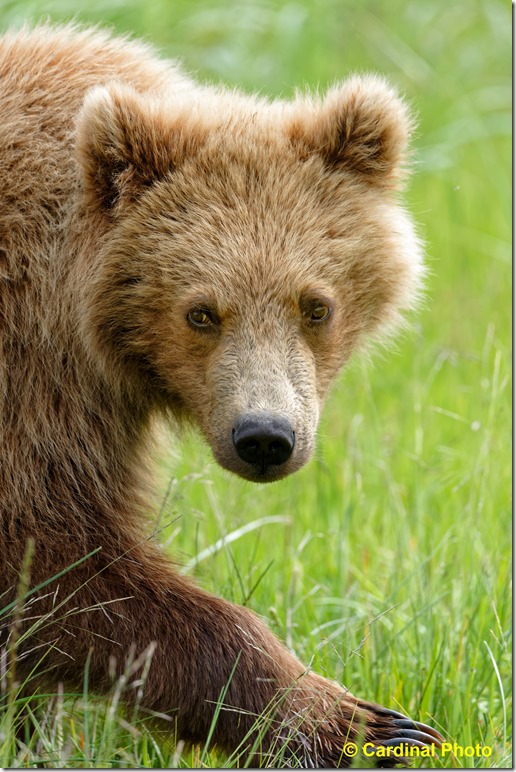
Alaskan brown bear cub, Nikon D810, Sigma 150-600mm Contemporary lens,
f/6 (wide open) @ 1/1500s, ISO 560
Ergonomics and handling
I had no problem at all using the lens, either hand held as needed or on a tripod for the most part. It does have the typical Sigma issue of placing the lens collar close to the lens mount. That makes it a bit tricky to use with a Sidekick or similar side mount tripod head. However, it worked perfectly with the slick little Acratech Long Lens head that I now use quite a bit when I don’t have a massive lens to support and need to limit the weight of everything I’m hauling.
The lens has a full complement of user controls, including two stabilization choices, near and far range limits, custom functions controlled through software, and a sliding lock to confine it to its shortest length (150mm). The focus and zoom rings are both smooth and solid, as are all the switches. It comes with a single, compact, lens hood that fits nicely either in place or turned around and placed over the end of the lens. At 4.1-inches wide and 10.2-inches long, the lens fits easily in any bag designed for carrying long lenses.
The lens focuses down to 110 inches (about 9 feet). While the lens isn’t as weatherproof as the Sport version, Sigma says the mount is “splash and dust proof” which is a big plus for anyone using this lens on safari. Another nice feature of many of the value-priced long lenses like this one is that you can use a front filter. In this case a 95mm version. Probably not a size you have lying around, but less expensive than custom drop-in filter holders.
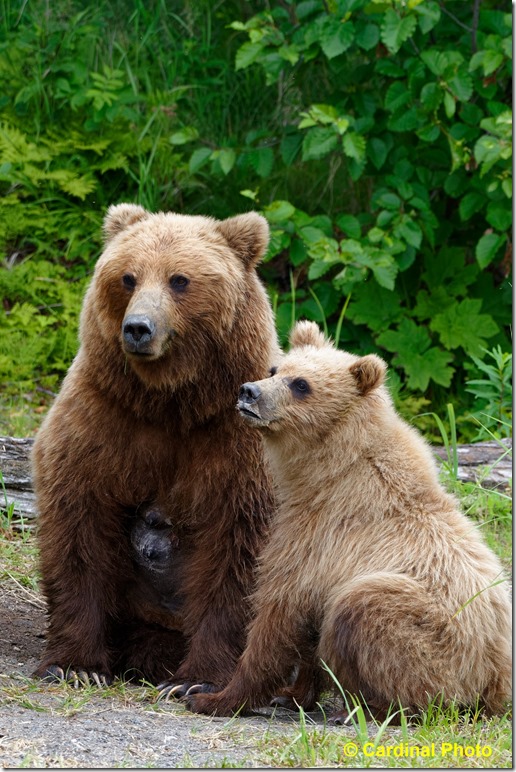
Alaskan brown bear with cub, Nikon D810, Sigma 150-600mm Contemporary lens,
1/750s @ f/8, 310mm, ISO 800
Image Quality
Once you get over the fact that super zooms have a hard time comparing image quality with their prime lens competitors, then it is a matter of how much of a tradeoff you are willing to make. From my experience the Sigma 150-600mm Contemporary lens is right up there with other Nikon-compatible super zooms for equivalent ranges – even when shooting on my unforgiving Nikon D810. It isn’t nearly on a par with the new Canon 200-400mm f/4 lens, but that is over 10x the price and twice the size. I expect the rumored new Nikon 200-400mm f/4 lens to be equally large and expensive.
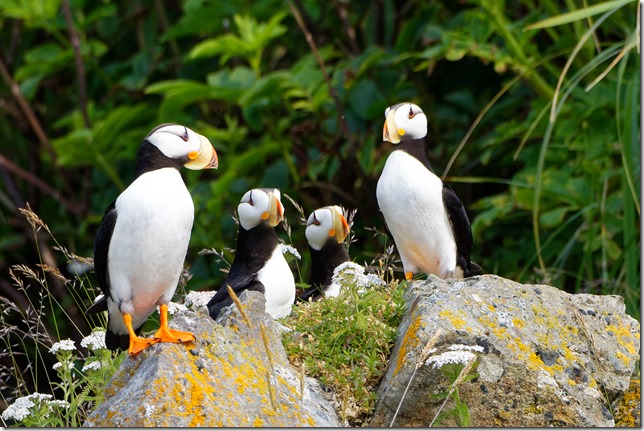
This image illustrates both the amazing strengths and the limitations of lightweight rigs.
It is a 2:1 crop of a 900mm effective image shot with a $1200 camera and $1100 lens.
As such it is (IMO) an amazing testament to the technology.
Look closely, you can see that a Nikon D810 or Nikon D5 with a Nikon 600mm f/4 lens
would provide a visible improvement, but at 5x the price and twice the weight.
If you're enjoying these images, come join us in Alaska
July, 2018 will be our 19th year photographing these amazing bears
You can get an early jump & lock in this year's price by signing up now!
Real-world images for sharpness comparison
I wanted to see how this lens’s sharpness held up at the long end, so I took a closer look at a couple of my Alaska images. The first is at 600mm with a Nikon D7500 (making it an effective 900mm). The first thing you notice is that the Autofocus of the camera and motor on the lens were actually fast enough to track the center Horned Puffin as it leapt into flight. The Puffin looks quite sharp as a result, so I cropped out the center section so you can see in a little more detail. Clearly there is some visible softness compared to the image I could have gotten with a $12,000 600 f/4, but that is to be expected. For most practical uses, there is plenty of detail available – even given the relatively-low 20MP resolution of the Nikon D7500.
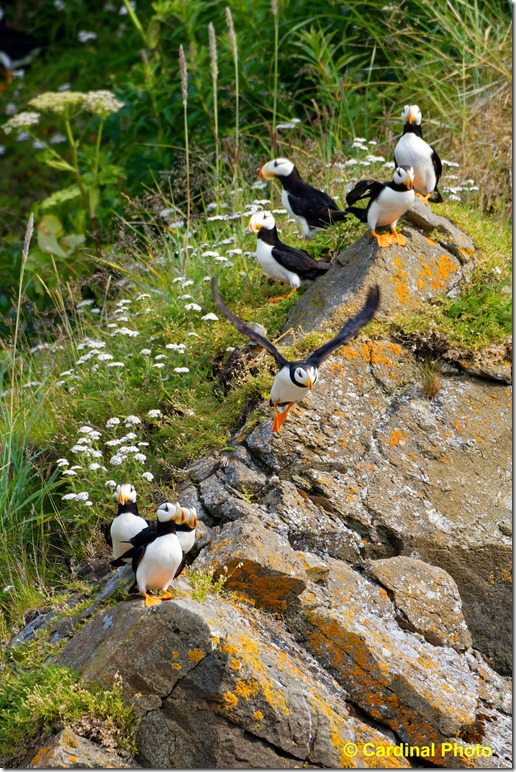
Horned Puffins, Nikon D7500 DSLR, Sigma 150-600mm Contemporary lens @ 600mm,
f/6.3 (wide open) @ 1/800s, ISO 400
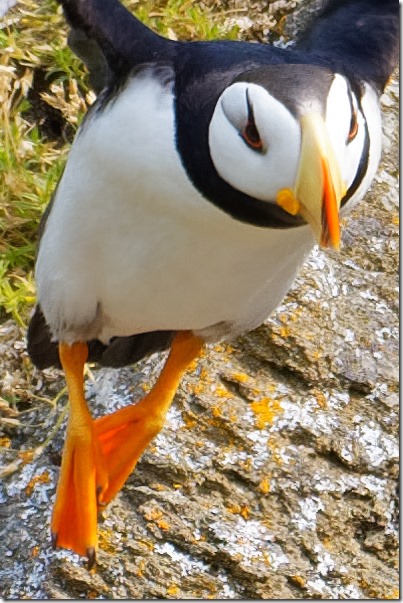
Crop from Puffin image, viewed at 100%
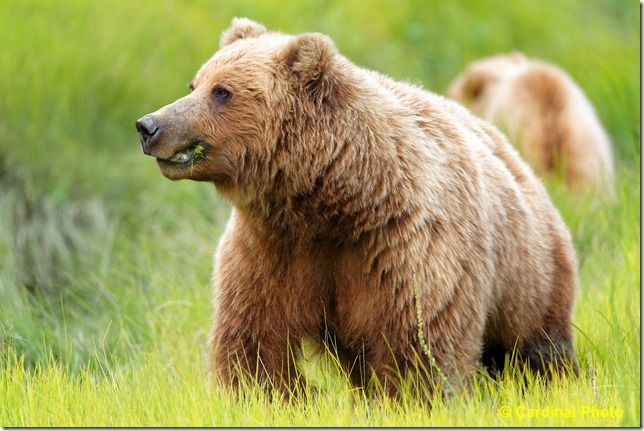
Alaskan brown bear, Nikon D810, Sigma 150-600mm Contemporary lens @ 480mm,
f/6 (wide open) @ 1/1000s, ISO 800
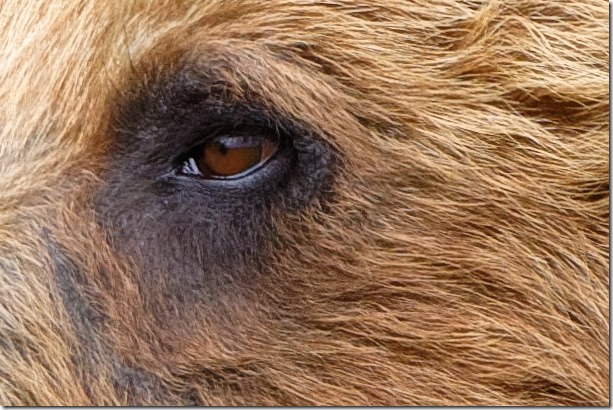
Crop from bear image, viewed at 100%
Summary
For the money, and because of its light weight, I can absolutely recommend this lens for someone who wants a reasonably-priced superzoom. If you don’t need the length at both ends, then the Nikon 200-500mm f/5.6 lens would also be a great option. If you want to be able to bash the lens about, and use it in all weather conditions, then you can consider the Sigma 150-600mm Sport lens. All in all, at $1089 (plus you get 4% B&H Rewards!) this lens is a great buy.
Specifications
Focal Length
150 - 600mm
Comparable 35mm Equivalent on APS-C Format Focal Length: 225 - 900 mm
Aperture
Maximum: f/5 - 6.3
Minimum: f/22
Camera Mount Type
Nikon F
Format Compatibility
35mm Film / Full-Frame Digital Sensor
Angle of View
16.4° - 4.1°
Minimum Focus Distance
110.2" (2.80 m)
Maximum Reproduction Ratio
1:5
Elements/Groups
20 / 14
Image Stabilization
Yes
Autofocus
Yes
Tripod Collar
Yes
Filter Thread
Front:95 mm
Dimensions (DxL)
Approx. 4.1 x 10.2" (10.41 x 25.91 cm)
Weight
4.3 lb (1.95 kg)
- Log in to post comments

